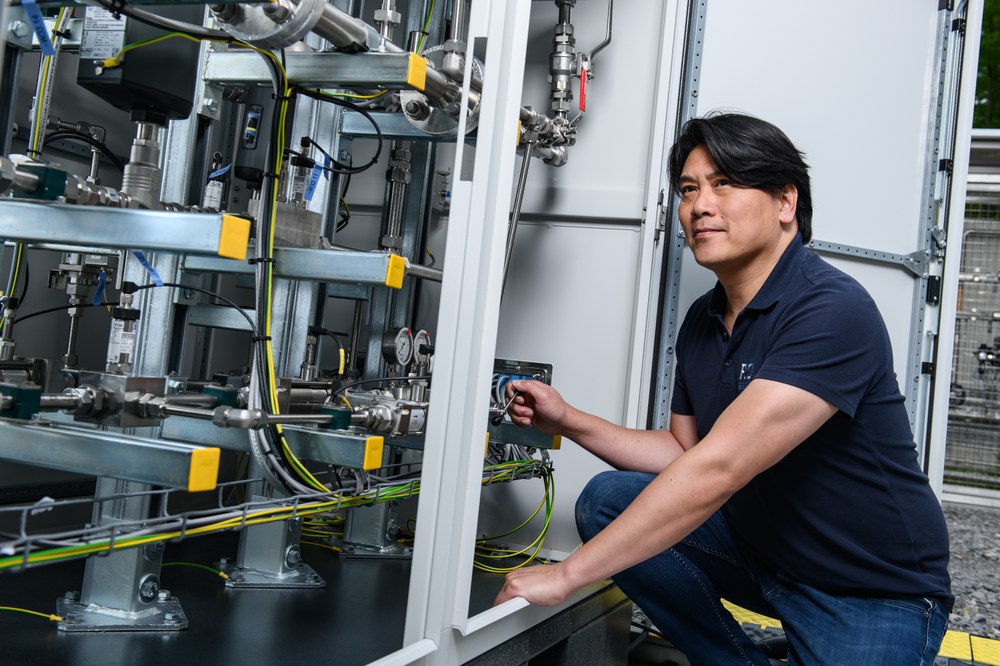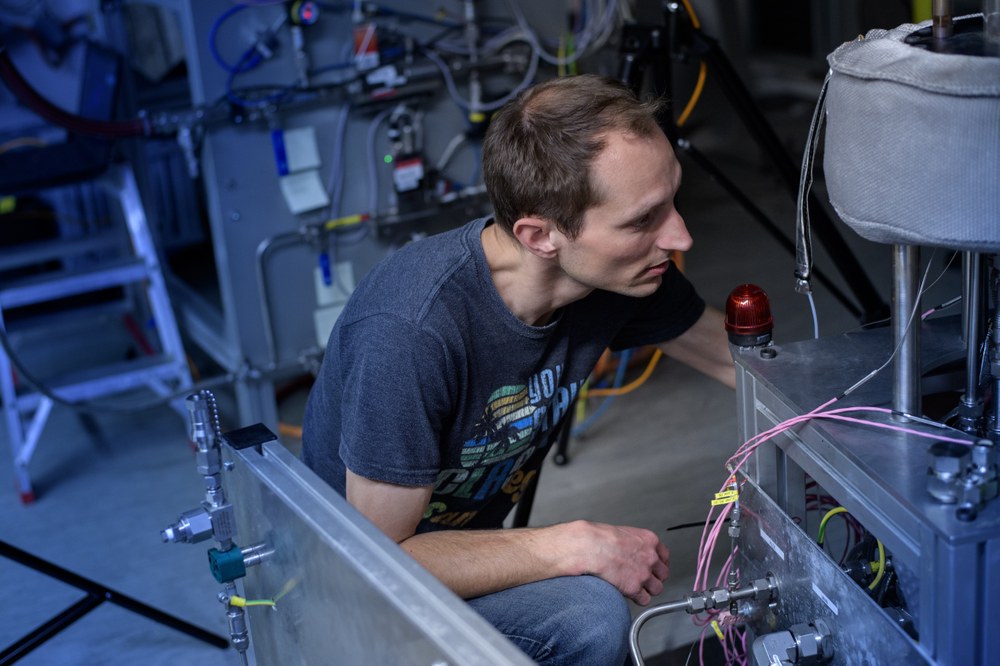Clean power
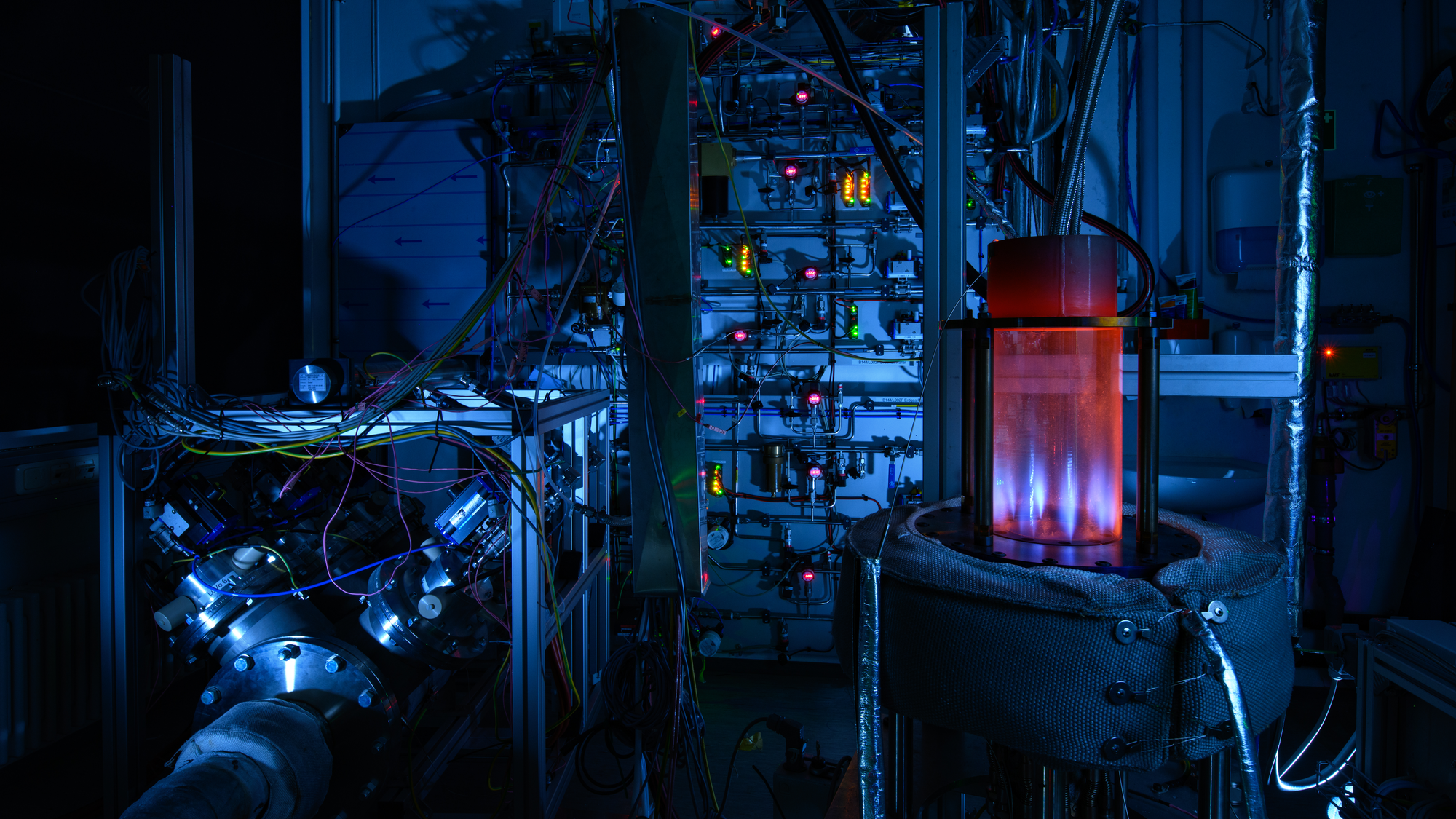
Gas turbines can compensate for periods of low wind and lack of sunlight in renewable power generation, stabilising the power grid, and thus making an important contribution to the energy transition – provided they run on hydrogen or other non-fossil fuels. However, the construction of new power plants takes years. Converting existing plants could be an important approach to accelerating the energy transition. A team from the DLR Institute of Combustion Technology, together with the service provider Power Service Consulting GmbH (PSC), has now completely converted a microturbine for the first time and tested it at the DLR site in Lampoldshausen using green hydrogen.
The guiding principle of the energy transition is perseverance. After all, many small and large challenges still need to be overcome before the whole of Germany can be supplied with electricity and heat generated without fossil fuels. Martina Hohloch and Timo Lingstädt from the DLR Institute of Combustion Technology and Tze-Yeung Cheung, Operations Manager at Power Service Consulting GmbH (PSC), are familiar with these challenges. Over the past two years, they have been working on Retrofit H2, a project funded by the Baden-Württemberg Ministry for the Environment, Climate and Energy Sector to the tune of more than 900,000 euros. The project involves retrofitting a micro gas turbine to run on pure hydrogen or a mixture of natural gas and hydrogen.
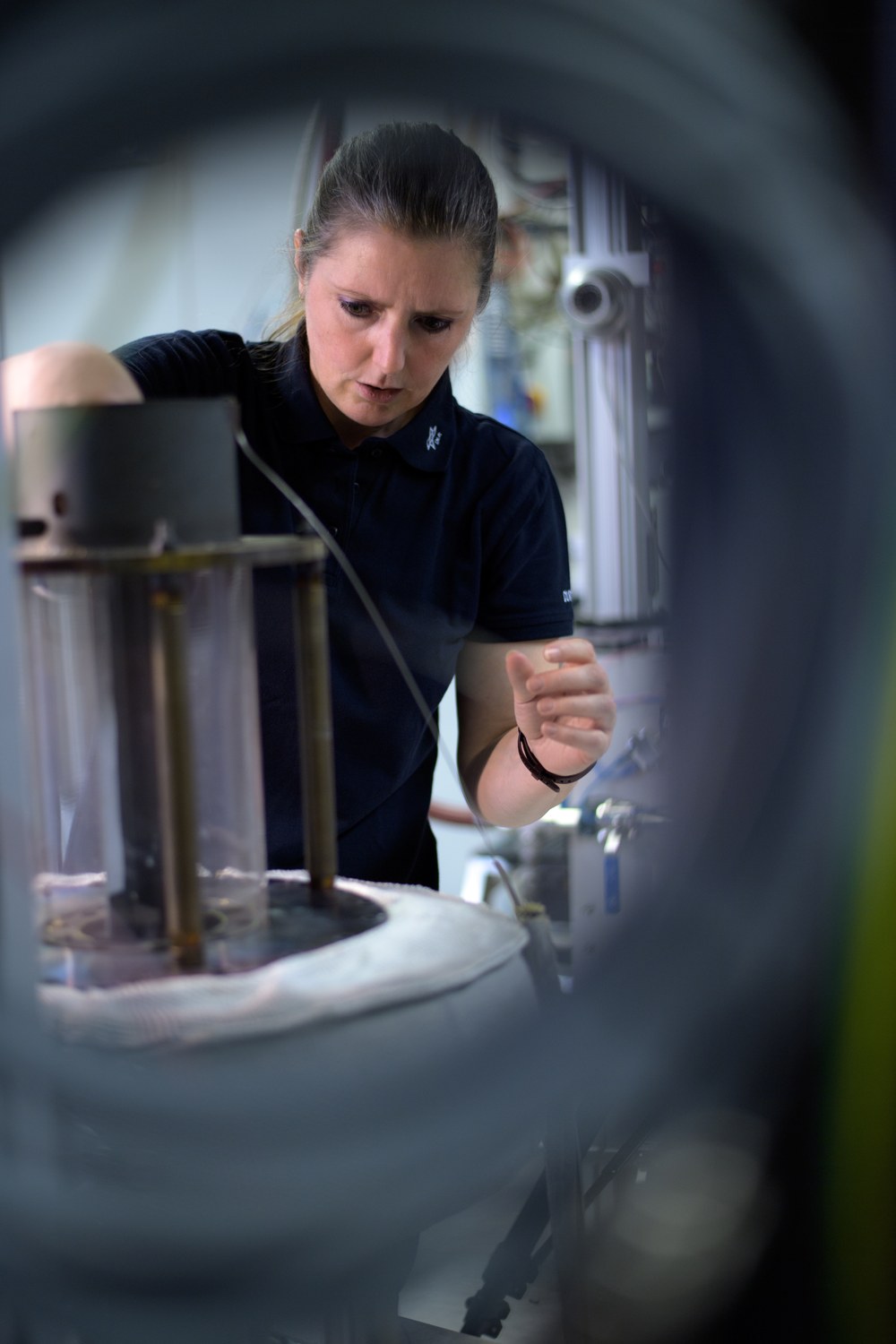
First converted commercial gas turbine
On a windy day in early summer at the DLR site in Lampoldshausen, the time has finally come: the prototype is to run on pure hydrogen at full power. While the deafening roar of a rocket test stand can be heard from the other side of the hill, Martina Hohloch is sitting in front of an inconspicuous grey box, half the size of a shipping container. Two years of hard work have gone into it. It is the first commercial gas turbine to have been successfully converted to run on pure hydrogen. The plant, from Ansaldo Green Tech Spa, has an electrical output of 100 kilowatts.
Micro gas turbines of this size are often used in breweries, hospitals and hotels to generate electricity and heat. Martina Hohloch and her team have done more than just replace the micro gas turbine's previous combustion chamber with a new hydrogen-compatible version developed at the institute. They have also completely converted the system to operate with the highly reactive fuel. Thanks to a modified control system and an upstream fuel-flexible control, mixing and distribution system from PSC the micro gas turbine can now be adjusted for use with different fuels. At the beginning of the project, the team examined several concepts for gas turbines of different sizes and compared how a retrofit could be carried out in each case. The best solution was then implemented in the prototype in Lampoldshausen. "Getting all these components to work in harmony was a real challenge," says Tze-Yeung Cheung.

The H2-Container Technical Center offers many advantages
The Stuttgart researchers chose Lampoldshausen for a good reason: the new H2-Container Technical Center at the Institute of Space Propulsion offers optimal conditions for testing with green hydrogen. The electrolyser, which splits water into hydrogen and oxygen, is just a stone's throw away from the turbine. Electricity from the neighbouring ZEAG wind farm in Harthäuser Wald is used to produce the hydrogen. "It couldn't be greener," says Hohloch, looking over to the wind turbines.
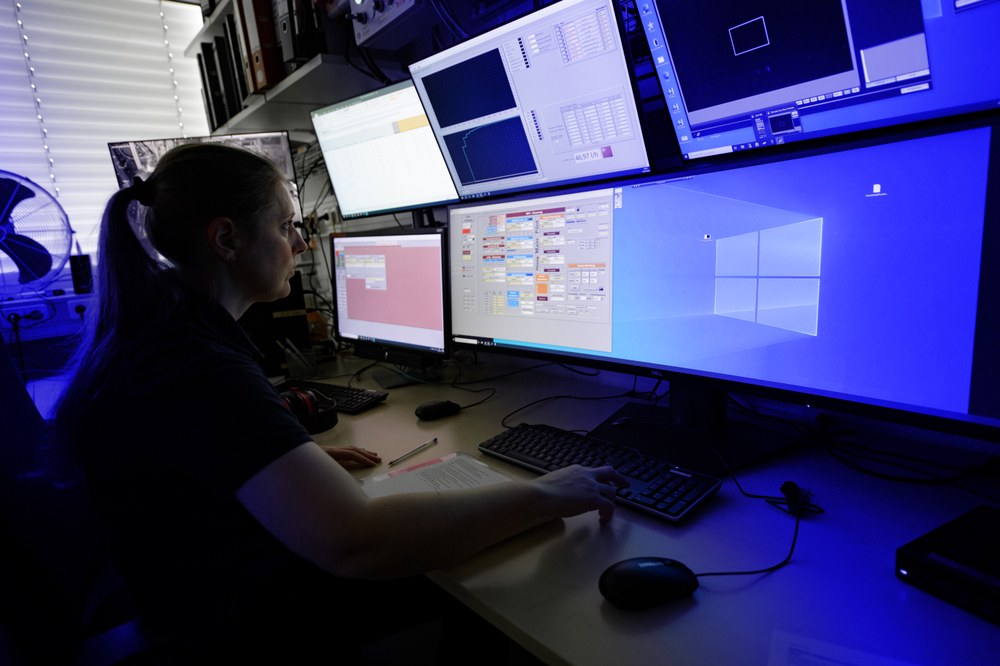
However, the last few weeks have not been a walk in the park for the team. They have had to overcome a number of challenges, including delivery problems for spare parts, a shortage of tradespeople and missing certifications. "We all underestimated just how complicated it is to find parts that are also fit for use with hydrogen," says Martina Hohloch. "In technology, there is always a solution," says Tze-Yeung Cheung, adding: "But the challenge is to determine just how complicated this solution is going to be." Unfortunately, there is a hitch this morning too. A conference call has been arranged with the manufacturer Ansaldo Green Tech to clarify the issue.
Retrofitting instead of rebuilding
Many gas turbines are currently capable of burning gas mixtures with up to one-third hydrogen by volume. However, the real challenge is to be able to use the same plant to burn not only mixtures but also pure hydrogen, while keeping emissions as low as possible. Such hybrid operation is not easy because hydrogen is highly reactive and burns at different temperatures than natural gas. Today's gas turbine developments are making it possible. But not all of the plants currently in operation in Germany – with a total output of around 35 gigawatts – can be replaced with new ones. That would entail a massive investment.
"It takes about six years and 30 million euros to build a new 15-megawatt gas turbine power plant. By comparison, retrofitting an existing plant takes just a year and a half and costs a tenth of that amount," explains Peter Kutne, Head of the Micro Gas Turbines Department at the Institute of Combustion Technology. "This clearly demonstrates the advantage of retrofitting." Converting existing power plants, at least in part, would not only save an enormous amount of money, but could also significantly accelerate the energy transition.

Commercial advantage – fuel flexibility
Until now, the companies that manufacture gas turbines have shown little interest in investing time in developing a retrofit concept. They earn more by selling new equipment. It is service providers like PSC from Sankt Leon-Rot who see a business model in retrofitting. "For us, a retrofit like this is a creation of our own. Of course we use prefabricated parts, but in the end we have a new model offering a much wider range of applications than before," says Tze-Yeung Cheung. From his perspective, the biggest advantage stems from the fuel flexibility. It enables breweries or sewage treatment plants, for example, to also burn gases that are generated as waste products. It will take some time before the hydrogen network in Germany is in place. He therefore believes that the development of decentralised power plant systems is a good way to start using hydrogen.
Stabilised combustion with fewer Flashbacks
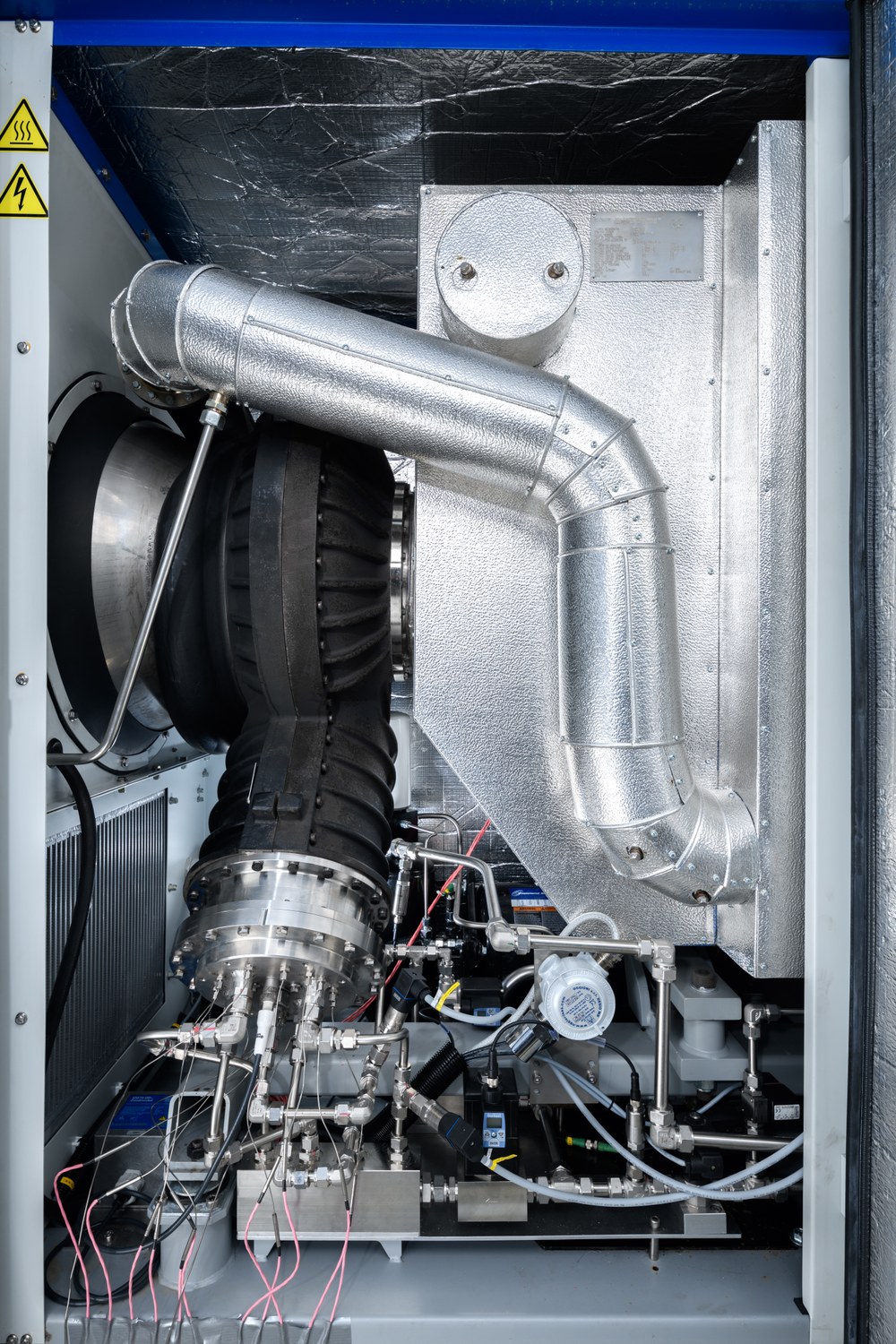
The researchers at the Institute of Combustion Technology designed the combustion chamber with this fuel in mind. "First of all, we wanted to achieve good hydrogen combustion," explains aerospace engineer Timo Lingstädt, who was responsible for optimising the combustion chamber in the project. To do this, he installed a new combustion chamber based on the concept of jet-stabilising combustion. This has been optimised at the Institute for hydrogen combustion for some time. Unlike the swirltype combustion chambers commonly used in industry, here the fuel is introduced at high speeds by axial jets. "The high momentum ensures strong recirculation in the combustion chamber and leads to an intensive mixing of the combusted gas with the fresh fuel-air mixture," explains Martina Hohloch. "This stabilises the flame very effectively." Above all, the high inflow velocities reduce the risk of flashbacks, which can cause extensive damage. In the case of a large industrial gas turbine, the downtime and subsequent maintenance alone as a result of such a flashback can incur costs in the millions.
First operation using pure hydrogen
This morning, the tension is palpable. "Whether or not the turbine will start up is one thing," says Hohloch. "And quite another for it to reach the right temperatures and target values that are planned during operation." On this day, the team's persistence finally pays off. After the telephone conference, it is clear which parameters need to be adjusted in the control system. The turbine is now running at full power with pure hydrogen for the first time and will continue to do so for several hours. The goal has been achieved, and the excitement is visible.
Yet the work is not over for the team led by Martina Hohloch – a patent is in the works, TÜV certification is pending, and the team also wants to further improve the emission values by conducting additional tests on the micro gas turbine. In the next step, PSC Consulting will scale up the concept for gas turbines of other sizes. The company has already delivered the first hydrogen-compatible version of the small turbine to the next Research project. This project will be able to build on the pioneering work of Retrofit H2.
Decentralised energy systems for the hydrogen economy

Interview with Peter Kutne, Head of the Gas Turbines Department at the DLR Institute of Combustion Technology.
What are decentralised energy systems?
We speak of decentralised energy systems when electricity or heat is generated in the immediate vicinity of the end user. These can be self-contained systems, like those in remote regions, but in most cases they are small-scale facilities that interact with other, neighbouring systems. Such a network is much more resilient than a centralised energy supply network in the event of a disaster. If one part fails, other networks can step in. The size of decentralised energy systems ranges from a few kilowatts in buildings to several dozen megawatts in urban districts or smaller communities.
Where would the use of such systems prove useful in Germany?
They could relieve the demand on our power grid and help to avoid losses in power transmission. Both industrial plants and residential areas could be organised in the form of such a local grid. The energy system would use various renewable sources as available, including wind, photovoltaics and geothermal energy. These sources can be combined with heat and battery storage systems or electrolysers for the production of hydrogen. This is why decentralised energy systems are a good starting point for a hydrogen economy, because they can produce their own hydrogen locally and use it as a storage medium. Such systems could provide rural communities, remote locations and industry with a reliable and carbon-free energy supply.
How do microturbines benefit decentralised power plants?
Micro gas turbines are already being used today in the field of combined heat and power – in other words, where there is a high demand for heat: in hotels, swimming pools or hospitals. In these areas, energy systems will become more complex in the future because some of the heat and electricity will be supplied from a range of renewable energy sources. The integration of additional storage systems will create local energy systems that interact with their environment. Microturbines have three major advantages: they are particularly low in emissions, they can be operated with different fuels and they require comparatively little maintenance.
An article by Anja Tröster from the DLRmagazine 176

